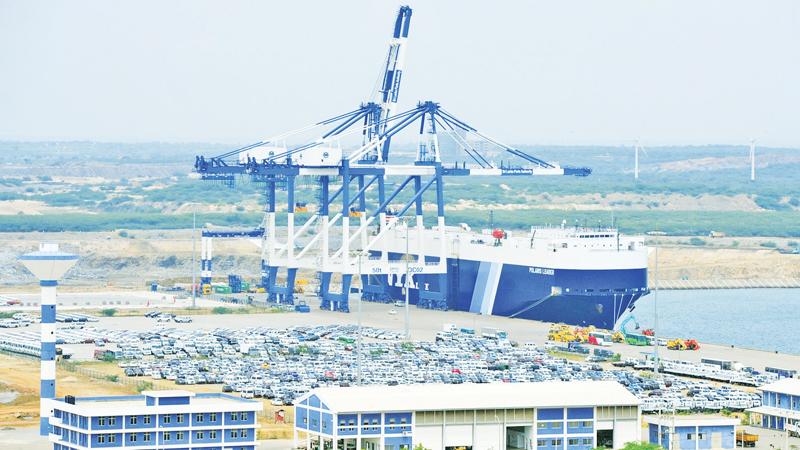
China’s Belt and Road Initiative (BRI) offers enormous opportunities for Sri Lanka to develop trade and promote investments as it has brought about trade between China and Pakistan alone to almost Sri Lanka’s GDP of US$ 80 billion, panellists told a forum on ‘The BRI and its implications for Sri Lanka’.
It was organised by the Chartered Institute of Logistics and Transport and the Post-Graduate Institute Management (PIM) and held at the PIM auditorium last week.
China’s investments in Pakistan has surpassed US$ 82 billion within a short span while Kazakhstan and many Central Asian countries have gained immensely from the Initiative aimed at driving trade, tourism and infrastructure investment in the region. BRI experts said the Initiative holds out the prospects of helping to bridge the infrastructure financing gap, increase connectivity, link local markets to regional and global value chains to increase trade and investments among partner countries.
China, the architect of the BRI remains among the top five investors in Sri Lanka with foreign direct investments (FDI) amounting to around 15 percent of the investments to the country. It has emerged as the largest bilateral donor to Sri Lanka overtaking Japan.
Power and energy, water, roads, railroads, highways, ports and airports are some of the major projects financed by China in Sri Lanka. The Hamabantota port and the Colombo Port city are two key development initiatives undertaken by China aimed at transforming the country’s geographical and business landscape.
Sri Lanka has become an emerging tourist destination among Chinese visitors accounted for around 271,000 travellers from China in 2016. A major share of the BRI investments in Sri Lanka has been on facilitating maritime trade.
Promotion of trade flows, attracting FDIs to Sri Lanka, hard and soft infrastructure, economic hub, development of global value chains and growth in tourism are some of the major benefits of the BRI for Sri Lanka.
However, according to the key note speaker, Dr. Janaka Wijesiri, the BRI is not without risks for Sri Lanka and it partner countries.
“Power rivalry between India and China is a major concern of the BRI and its beneficiary countries. While Sri Lanka tries to maintain relations with India and Japan, it has to be mindful of China whose rivals are Japan and India,” Dr. Wijesiri said.
The growing debt burden, low investment returns, transparency and corruption are some of the other risks of the BRI, according to Dr. Wijesiri who stressed that BRI’s success for its partner nations will need to go beyond infrastructure development to promote soft skills among participating countries.
Panellists also cautioned that the implications of the BRI for a country’s autonomy and sovereignty are matters of concern. With a major portion of investments and funding in BRI coming from Chinese public entities, there is a concern that a growing debt burden could lead to weaker negotiating strength and loss of sovereignty. It was noted that with ownership of key central infrastructure developments, such as ports being tied to such entities, Sri Lanka sacrifices a level of autonomy around how to manage this infrastructure. China’s takeover of the Hambantota port has raised concerns regarding the loss of sovereignty arising from large debt to equity swap arrangements. DRH Logistics, Chairman and Managing Director Diren Hallock said if Sri Lanka could manage India correctly, there will be no end to harnessing the benefits of the BRI. Sri Lanka has failed in approaching geo-political issues, he said.
The speakers said that the BRI offers opportunities and challenges and some of the challenges perceived by the West are due to the fact that the BRI is a Chinese initiative.
‘China has its global ambitions. We should make a distinction between the challenges perceived by the West and those relating to Sri Lanka,” a panellist said.
